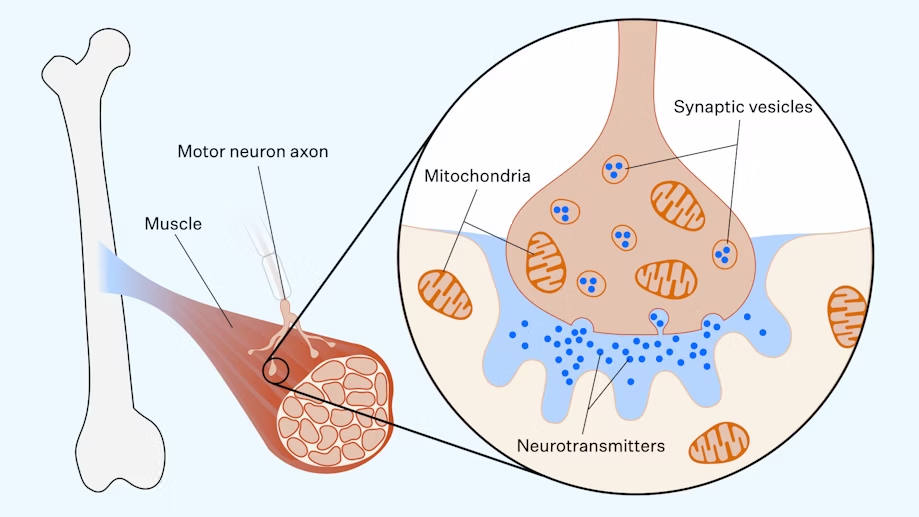First characterized in the Labrador Retriever, Exercise-Induced Collapse (EIC, for short) is a genetic disorder that causes dogs to collapse during strenuous activity.
Fortunately, researchers have developed a genetic test for EIC, allowing pet parents to better plan for their pups’ lifelong care.
What are the symptoms of EIC in dogs?
On average, dogs with EIC start showing signs of collapse by about a year of age. And the first noticeable warning of impending collapse usually occurs after 5-15 minutes of strenuous exercise.
An affected dog will begin showing an odd, wobbly gait and wide stance in the hind limbs. This progresses until those limbs fail to support the weight of the pup.
Some dogs try to continue running afterward—dragging their hind legs behind them—which may progress to full collapse. Most collapsed dogs remain conscious and alert, and the condition does not appear to be painful.

What is Exercise-Induced Collapse, scientifically speaking?
Dogs with EIC have a mutation in the dynamin 1 gene (DNM1). This causes one amino acid to replace another within a protein, resulting in the dysfunction of the protein.
The dynamin 1 protein supports the transmission of neurologic impulses to the muscles. (In other words, it enables the brain to send instructions that make muscles move.) It also helps recycle the synaptic vesicles that transmit these impulses.
So, dogs with a defective dynamin 1 protein aren’t able to sustain impulse transmission through long periods of intense activity, and their muscles cease to function normally.
EIC is considered to be inherited in an autosomal recessive fashion. That means a dog needs two copies (one from each parent) to show clinical signs of disease. Dogs with only a single copy of DNM1, on the other hand, are carriers. And though they shouldn’t have episodes of collapse, they can pass the abnormal gene onto their puppies.
Which breeds are affected by Exercise-Induced Collapse?
Breeds that carry EIC are mainly from the Sporting group, with the Labrador Retriever being the disorder’s poster child. Other breeds that have been confirmed to carry the DNM1 mutation include:
Note: Veterinary literature describes other syndromes of collapse, such as Border Collie Collapse, which is thought to affect a number of herding breeds. The basis for this disorder hasn’t been determined yet. But dogs that have signs consistent with those of Border Collie Collapse don’t carry the genetic mutation associated with EIC in Labs and other Sporting breeds.

How do you test for Exercise-Induced Collapse in dogs?
Genetic testing for EIC is now the easiest, most reliable way to determine whether a dog has the condition. But an accurate diagnosis is critical when determining the best treatment plan.
So, in addition to the genetic test, veterinarians may still recommend a full physical and neurological exam, blood work, X-rays, and more to rule out the many other potential causes (metabolic, orthopedic, cardiac, respiratory, muscular, neurological, etc.) of collapse.
Test Your Dog for EIC →My dog has EIC. Now what?
First, the good news: Dogs with EIC can live long, happy lives.
But once they begin having episodes, they should no longer participate in intensive training or competition. That said, your pup should be able to tolerate mild to moderate exercise if you avoid trigger activities.
Because this is a recessive disorder, you can also breed a dog with EIC. But you must first ensure the other dog being bred doesn’t have any copies of the DNM1 mutation. (You can confirm this with a dog DNA test.) Otherwise, the pair may pass EIC down to their puppies.
And keep in mind, all pups born to an at-risk dog will carry at least one copy of the mutated gene.
What types of exercise should dogs with EIC avoid?
As mentioned above, most dogs with EIC should be able to safely enjoy low-intensity exercise. Episodes of collapse tend to follow periods of continuous, intense exercise associated with high levels of excitement or anxiety—such as competitions between dogs.
For Sporting breeds like the Lab, risky activities may include repeated retrieving, field training and hunting, or retriever training with live birds. Positive training methods are also important for these pups, as a harsh training approach can cause stress and increase the chance of episodes.

What should I do if my dog collapses?
It’s vital to stop all exercise as soon as you notice any gait abnormalities. Though dogs typically recover well from EIC episodes, collapse can sometimes be fatal.
So, if your dog collapses:
- Stop the activity, and relocate them to a less stimulating environment if possible.
- Make sure their breathing is unobstructed so they can successfully blow off heat.
- Offer water or ice by mouth, and cool your dog by wetting them down.
Note: There’s no evidence of significant differences in post-exercise temperature between dogs with EIC and those without. But elevated temperatures may contribute to the abnormal function of the dynamin 1 protein.
Even if you follow the steps above, signs may continue for 3-5 minutes. But most dogs fully recover in 5-45 minutes.
How do you treat Exercise-Induced Collapse in dogs?
Other than careful monitoring during exercise and management of any episodes that occur, no treatment for EIC exists. But anecdotally, some pet parents have found success with various remedies.
- About 30% of dogs with EIC have low levels of carnitine in their muscles, and several of these pups have responded to a cocktail of L-carnitine, Coenzyme Q10, and riboflavin.
- Some severely affected dogs have been treated successfully with a nutraceutical known as 7-keto-DHEA.
- Other more severely affected dogs have been treated with phenobarbital, a medication commonly used to prevent seizures. Veterinarians are not sure why this sometimes seems to work. But it’s possible that it relaxes the pup enough to prevent them hitting the threshold for collapse.
- Pet parents sometimes report that spaying or neutering their dogs decreased or stopped collapse episodes.
(As a reminder, it’s important to discuss any treatment ideas with your veterinarian before giving anything to your dog.)
Test your pup for EIC and 210+ other health risks.
When you know more about your dog, you can tailor care to their unique needs. And as the most comprehensive dog DNA test, Wisdom Panel™ Premium can help you know more than ever before about your pup’s health, traits, and ancestry.
Get Premium














